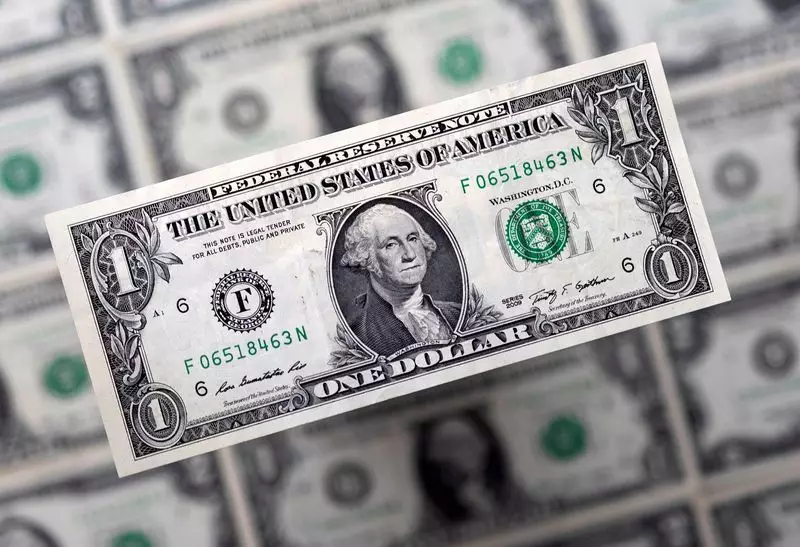The U.S. dollar has shown remarkable strength recently, achieving a one-year high against a basket of major currencies. This upward momentum comes after four consecutive sessions of gains, significantly driven by the economic policies and market expectations related to Donald Trump’s administration. As the incoming President positions himself on various fronts, including trade tariffs and immigration, market sentiment reflects a growing confidence in the dollar’s potential to maintain its value amid these changes.
On the surface, one might view these dollar gains as a testament to robust U.S. economic fundamentals. However, it is essential to delve deeper to understand the intrinsic and extrinsic factors influencing this currency’s fluctuations. Key market players have highlighted that while the dollar benefits from current bullish momentum, it could face corrections if U.S. economic indicators begin to show signs of weakening. The currency’s ability to hold its ground may hinge on external conditions—including geopolitical dynamics and Federal Reserve policy adjustments—rather than purely domestic economic strength.
Analysts are closely monitoring the Federal Reserve’s actions, particularly its stance on interest rates. Current predictions suggest a pathway of easing monetary policy in accordance with prevailing economic data; however, the newly projected increases in federal deficit spending imply a longer trajectory of inflation. The Trump administration’s proposed influx of infrastructure and defense spending, coupled with potential tariff increases, is likely to stoke inflationary pressures.
This anticipated inflation leads to speculative behaviors in the market, with rising Treasury yields offering further support to the dollar’s strong performance. Increased yields on U.S. government bonds indicate confidence in the ability of the economy to maintain growth, which contrasts with the persistent worries of potential recessionary triggers stemming from international tensions or domestic shifts in the labor market.
Amid these happenings, the cryptocurrency landscape experienced its own surge, with bitcoin reaching an unprecedented record of $93,480. This spike can be linked to the broader digital currency adoption narrative endorsed by Trump, who has claimed intentions to establish the U.S. as “the crypto capital of the planet.” The interplay between cryptocurrency and traditional currencies, particularly the dollar, presents a fascinating dynamic; while bitcoin’s allure grows, it also reveals the complexities and instabilities that come with a less regulated financial environment.
Bitcoin’s recent rise by 2% toward its record peak is noteworthy; however, this volatility underscores the inherent risks within the cryptocurrency market. Investors must consider whether the promise of high returns outweighs the potential for substantial losses, especially with the looming possibility of regulatory changes under a new administration.
The implications extend beyond U.S. borders, with the dollar’s strength causing tremors in global markets. For instance, the euro has slipped to precarious levels against the dollar, while the British pound faces similar pressures. The continual depreciation of these currencies can prompt discussions regarding the stability of the Eurozone and the UK’s economic recovery post-Brexit. Such disparities could influence foreign investment flows and trade balances, further embedding the dollar’s dominance in international trade.
Emerging markets, particularly those dependent on dollar-denominated debt, may face headwinds if the dollar continues to strengthen. Countries with significant exposure to USD debt could encounter heightened repayment burdens, complicating efforts for economic growth and stability. The correlation between a strong dollar and its impact on global trade opens avenues for potential crises in markets that lack resilience against fluctuations in currency value.
The recent strength of the U.S. dollar is a multifaceted phenomenon tied intricately to the U.S. economic landscape and global market conditions. While the immediate outlook appears favorable for the dollar, particularly in light of the incoming administration’s policies, investors and analysts must remain cautious. Continued vigilance over macroeconomic indicators will be crucial in determining the dollar’s future trajectory as well as the health of global financial markets. With cryptocurrency also playing a pivotal role, it illustrates the evolving nature of wealth and investment in a rapidly changing economic environment.

